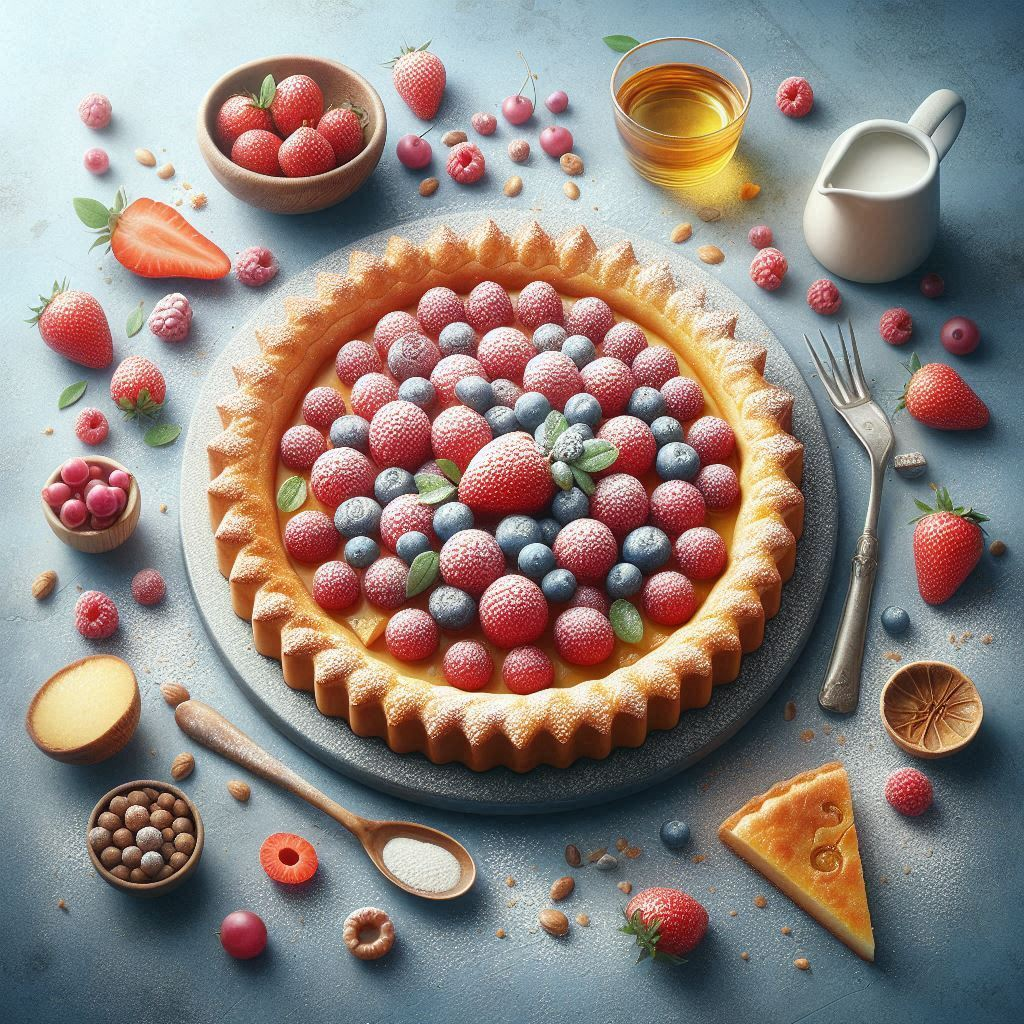
A Slice of History: Unraveling the Secrets of Crostata
Crostata, a delightful Italian dessert, is more than just a simple fruit tart. It’s a story woven with history, tradition, and the warmth of home-baked goodness. Let’s embark on a journey to discover its origins and learn the secrets of crafting the perfect crostata.
From Humble Beginnings to a Culinary Icon
The origins of crostata can be traced back to ancient Roman times, where simple, open-faced pastries filled with fruit were a common treat. These early versions were often made with a basic dough of flour, water, and olive oil, and filled with seasonal fruits like figs, dates, and grapes.
Over time, the recipe evolved, incorporating butter and eggs into the dough, resulting in a richer and more flaky crust. The addition of spices like cinnamon and nutmeg further enhanced the flavors, making crostata a cherished dessert across Italy.
Regional Variations: A Tapestry of Flavors
While the basic principles of crostata remain consistent, regional variations abound, reflecting the diverse culinary traditions of Italy.
- In Tuscany, the classic crostata is filled with sweet ricotta cheese and candied fruit, creating a creamy and decadent treat.
- In Emilia-Romagna, the focus shifts to seasonal fruit, often cherries or peaches, which are baked into a juicy and flavorful filling.
- In Sicily, the crostata takes on a more rustic character, with a thick, buttery crust and a simple filling of plums or apricots.
The Art of Crostata Making: A Step-by-Step Guide
Crafting a perfect crostata requires patience and attention to detail. Here’s a comprehensive guide to help you create your own masterpiece:
1. The Dough:
- The key to a good crostata lies in the dough. A rich, buttery dough is essential for a flaky and flavorful crust.
- Use high-quality flour and cold butter for the best results.
- Chill the dough thoroughly before rolling it out, ensuring it stays firm and prevents shrinkage during baking.
2. The Filling:
- Choose your favorite fruit: From classic strawberries and blueberries to more exotic peaches and apricots, the possibilities are endless.
- Prepare the fruit: Slice or chop the fruit, depending on its size and texture.
- Sweeten the filling: Use sugar to balance the tartness of the fruit and enhance its natural sweetness.
- Add a touch of spice: Cinnamon, nutmeg, or vanilla extract can add depth and complexity to the flavor profile.
3. Assembly and Baking:
- Roll out the dough on a lightly floured surface, forming a circle or a rectangle, depending on your preference.
- Transfer the dough to a baking sheet or tart pan.
- Arrange the fruit filling in a single layer, leaving a small border around the edges.
- Bake the crostata in a preheated oven until the crust is golden brown and the filling is bubbly.
4. Finishing Touches:
- Dust the crostata with powdered sugar for a touch of sweetness and elegance.
- Serve warm or at room temperature, accompanied by a dollop of whipped cream or a scoop of vanilla ice cream.
Beyond the Recipe: A Celebration of Tradition
Crostata is more than just a dessert; it’s a symbol of Italian culinary heritage, a testament to the enduring power of simple ingredients and time-honored techniques. Whether enjoyed at a family gathering or shared with friends, each bite of crostata tells a story of tradition, love, and the joy of baking.



